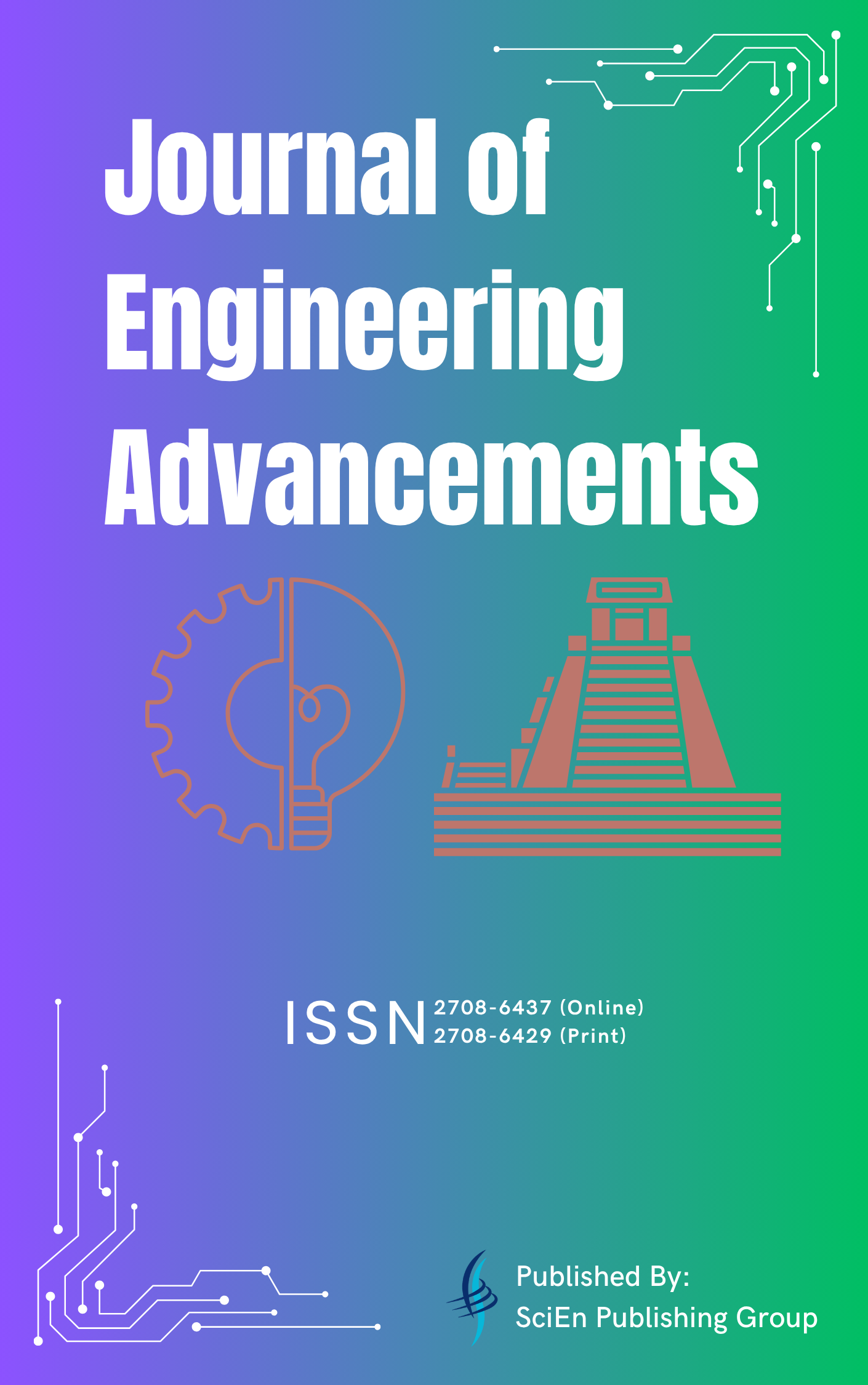Numerical Simulation of Bi-Adhesive Lap Joints
DOI:
https://doi.org/10.38032/scse.2025.02.16Keywords:
Bonded Joint, Bi-adhesive lap joint, Carbon fiber adherend, Shear stress, Peel stressAbstract
The stresses in single-lap bonded joints are highest at the edges, where failure frequently originates, and lowest at the center. The stress concentration at the ends of a bonded lap joint is influenced by the relative stiffness of the adherend and adhesive used. The stress concentration is smaller and the joint strength may be increased the less stiff the adhesive used in the bond line for a particular adherend. With this technique, high joint strength can be attained. Adhesive joints have been used in a lot of investigations in the past. Numerous industries, including the automotive and aerospace sectors, conduct in-depth studies to ascertain how adhesive joints affect lap bonding. It has also been discovered that when bi-adhesive is utilized in a lap joint rather than mono adhesive, more uniform stress can be obtained. Bi-adhesive was applied with a firm adhesive in the overlap's center and a low-modulus adhesive at its edges, which were expected to undergo stress concentrations. A concentrated force was delivered to one side of the entire portion, which had one side fixed. The result shows that the stiffer adherend has higher strength. Through finite element modeling, the rise in apparent lap-shear strength was qualitatively predicted.
Downloads
Downloads
References
[1] W. C. W. Robert D. Adams, Structural Adhesive Joints in Engineering, Springer Dordrecht, 1984.
[2] J. M. M. Y. Tsai, "An evaluation of analytical and numerical solutions to the single-lap joint," International Journal of Solids and Structures, vol. 31, no. 18, pp. 2537-2563, 1994. DOI: https://doi.org/10.1016/0020-7683(94)90036-1
https://doi.org/10.1016/0020-7683(94)90036-1 DOI: https://doi.org/10.1016/0020-7683(94)90036-1
[3] D. Oplinger, "Effects of adherend deflections in single lap joints," International Journal of Solids and Structures, vol. 31, no. 18, pp. 2565-2587, 1994. DOI: https://doi.org/10.1016/0020-7683(94)90037-X
https://doi.org/10.1016/0020-7683(94)90037-X DOI: https://doi.org/10.1016/0020-7683(94)90037-X
[4] L. J. Hart-Smith, Adhesive-Bonded Single-Lap Joints, Virginia: NASA, 1973.
[5] J. J. L. D. G. L. Kum Cheol Shin, " A study on the lap shear strength of a co-cured single lap joint," Journal of Adhesion Science, vol. 14, no. 1, pp. 123-139, 2000. DOI: https://doi.org/10.1163/156856100742140
https://doi.org/10.1163/156856100742140 DOI: https://doi.org/10.1163/156856100742140
[6] W. C. Carpenter, "A Comparison of Numerous Lap Joint Theories for Adhesively Bonded Joints," The Journal of Adhesion , vol. 35, no. 1, pp. 55-73, 1991. DOI: https://doi.org/10.1080/00218469108030435
https://doi.org/10.1080/00218469108030435 DOI: https://doi.org/10.1080/00218469108030435
[7] J. W. S. Paul A. Cooper, "A Critical Examination Of Stresses In An Elastic Single Lap Joint," NASA Technical Paper 1507, 1979.
[8] A. D. C. &. R. D. Adams, "Influence of the Spew Fillet and other Parameters on the Stress Distribution in the Single Lap Joint," The Journal of Adhesion , vol. 13, no. 2, pp. 141-155, 1981. DOI: https://doi.org/10.1080/00218468108073182
https://doi.org/10.1080/00218468108073182 DOI: https://doi.org/10.1080/00218468108073182
[9] R. A. L. F. d. S. L.D.R.Grant, "Experimental and numerical analysis of single-lap joints for the automotive industry," International Journal of Adhesion and Adhesives, vol. 29, no. 4, pp. 405-413, 2009. DOI: https://doi.org/10.1016/j.ijadhadh.2008.09.001
https://doi.org/10.1016/j.ijadhadh.2008.09.001 DOI: https://doi.org/10.1016/j.ijadhadh.2008.09.001
[10] Ş. Temiz, "Application of bi-adhesive in double-strap joints subjected to bending moment," Journal of Adhesion Science and Technology, vol. 20, no. 14, pp. 1547-1560, 2006. DOI: https://doi.org/10.1163/156856106778884262
https://doi.org/10.1163/156856106778884262 DOI: https://doi.org/10.1163/156856106778884262
[11] R. G. M. Kemal Apalak, "On non-linear thermal stresses in an adhesively bonded single lap joint," Computers & Structures, vol. 80, no. 1, pp. 85-98, 2002. DOI: https://doi.org/10.1016/S0045-7949(01)00139-0
https://doi.org/10.1016/S0045-7949(01)00139-0 DOI: https://doi.org/10.1016/S0045-7949(01)00139-0
[12] L. Q. &. M. M. I. Pires, "Numerical simulation of mono- and bi-adhesive aluminium lap joints," Journal of Adhesion Science and Technology, vol. 20, no. 1, pp. 19-36, 2006. DOI: https://doi.org/10.1163/156856106775212387
https://doi.org/10.1163/156856106775212387 DOI: https://doi.org/10.1163/156856106775212387
[13] L. N. McCartney, "Predicting Properties of Undamaged and Damaged Carbon Fibre Reinforced Composites," in The Structural Integrity of Carbon Fiber Composites, Switzerland, Springer International Publishing , 2017, pp. 425-467. DOI: https://doi.org/10.1007/978-3-319-46120-5_16
https://doi.org/10.1007/978-3-319-46120-5_16 DOI: https://doi.org/10.1007/978-3-319-46120-5_16
Published
Conference Proceedings Volume
Section
License
Copyright (c) 2025 Pritam Debnath, Arup Kumar Debnath, Raju Ahammad, Md Arifuzzaman, Md Shariful Islam (Author)

This work is licensed under a Creative Commons Attribution 4.0 International License.
All the articles published by this journal are licensed under a Creative Commons Attribution 4.0 International License

